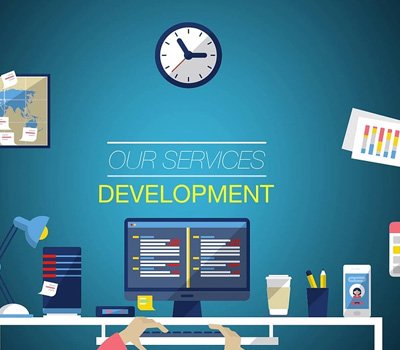
Increase Profits
Increasing profits in the retail sector is a multifaceted endeavor that involves enhancing revenue while managing costs effectively.
Retailers must strike a balance between attracting and retaining customers, optimizing operations, and ensuring that the bottom line grows.
Here are strategies that retailers can implement to increase their profits.
Understanding Profit Drivers in Retail
Profit in retail is driven by two primary factors: revenue and costs.
Revenue can be increased by selling more products or services, raising prices, or a combination of both.
Costs are controlled through efficient operations, reducing waste, and managing inventory effectively.
The interplay between these factors determines the profitability of a retail business.
Strategies to Increase Profits in Retail
Optimize Pricing Strategy
Pricing is a critical lever for profit.
Retailers should consider dynamic pricing strategies, where prices are adjusted based on demand, competition, and market conditions.
Implementing psychological pricing tactics, such as pricing items at $0.99 instead of $1.00, can also subtly increase sales.
Improve Sales Volume
Increasing foot traffic and conversion rates can lead to higher sales volumes.
This can be achieved through effective marketing campaigns, loyalty programs, and providing excellent customer service.
Expanding sales channels, such as online platforms, can also reach more customers.
Expand Product Range
Offering a wider range of products can attract a broader customer base and encourage existing customers to purchase more.
However, it’s important to balance this with inventory costs and ensure that the product mix meets customer demand.
Enhance Customer Experience
A positive shopping experience can lead to repeat business and word-of-mouth referrals.
Retailers should focus on training staff, creating an appealing store environment, and providing personalized services to enhance customer satisfaction.
Control Inventory Costs
Effective inventory management can reduce holding costs and minimize losses from unsold goods.
Techniques such as just-in-time inventory can help retailers keep stock levels in line with demand.
Reduce Operating Expenses
Cutting unnecessary expenses can directly improve profits.
This might involve negotiating better terms with suppliers, reducing energy consumption, or streamlining staffing costs without compromising customer service.
Leverage Technology
Investing in technology can improve efficiency and reduce costs in the long run.
Point-of-sale systems, inventory management software, and customer relationship management (CRM) platforms can automate processes and provide valuable insights for decision-making.
Focus on High-Margin Products
Identifying and promoting high-margin products can significantly boost profits.
Retailers should analyze their sales data to understand which products offer the best profit margins and focus marketing efforts on these items.
Diversify Revenue Streams
Retailers can look beyond traditional sales and consider alternative revenue streams such as offering classes, personal shopping services, or renting out space for events.
Implement Cross-Selling and Upselling
Training staff to effectively cross-sell and upsell can increase the average transaction size.
This involves suggesting complementary products or more expensive alternatives to customers.
Streamline Supply Chain
A streamlined supply chain can reduce costs and improve profit margins.
This includes optimizing logistics, reducing lead times, and managing supplier relationships to ensure cost-effectiveness and reliability.
Monitor Financial Metrics
Regularly monitoring key financial metrics such as gross margin, net profit margin, and sales per square foot can help retailers identify areas for improvement and track the impact of strategies implemented.
Conclusion
Increasing profits in retail requires a comprehensive approach that focuses on both revenue growth and cost management.
By optimizing pricing, improving sales volume, expanding product ranges, enhancing customer experience, controlling inventory costs, reducing operating expenses, leveraging technology, focusing on high-margin products, diversifying revenue streams, implementing cross-selling and upselling techniques, streamlining the supply chain, and monitoring financial metrics, retailers can set themselves on a path to improved profitability.
Each strategy should be tailored to the specific context of the retail business and its customer base to achieve the best results.
Improve Cash Flow
Improving cash flow is a fundamental aspect of maintaining a healthy retail business.
Cash flow, the net amount of cash being transferred into and out of a business, is a critical indicator of financial health.
For retailers, managing cash flow effectively means ensuring that the timing of cash inflows from sales aligns with the outflows for expenses such as inventory purchases, rent, salaries, and other operational costs.
Here’s how retailers can optimize their cash flow to ensure sustainability and growth.
Understanding Cash Flow in Retail
In retail, cash flow is influenced by several factors:
- Sales Revenue: The primary source of cash inflow, which can be affected by seasonal trends, promotions, and consumer demand.
- Inventory Management: A significant part of cash outflow, as purchasing stock ties up cash until the inventory is sold.
- Operating Expenses: Regular outflows for running the business, including rent, utilities, payroll, and marketing.
- Accounts Receivable and Payable: The management of credit terms with customers and suppliers can impact cash flow timing.
Strategies to Improve Cash Flow in Retail
Monitor Cash Flow Regularly
Retailers should have a system in place to monitor cash flow regularly, such as weekly or monthly.
This can be done through accounting software that tracks cash inflows and outflows, providing a clear picture of the financial status at any given time.
Improve Inventory Turnover
High inventory turnover indicates that a retailer is selling goods quickly and replenishing inventory without tying up too much cash. Retailers can improve turnover by:
- Reducing excess stock and clearance items quickly.
- Using just-in-time (JIT) inventory systems to purchase stock in line with demand.
- Analyzing sales data to focus on high-demand, high-margin items.
Manage Credit Terms
Offering credit to customers can boost sales, but it also delays cash inflows. Retailers should:
- Set clear credit policies and stick to them.
- Offer discounts for early payments to encourage quicker inflows.
- Perform credit checks on new customers to reduce the risk of non-payment.
Conversely, negotiating better credit terms with suppliers can delay cash outflows, keeping more cash in the business for longer.
Optimize Pricing Strategies
Setting the right prices is crucial for maintaining a healthy cash flow. Retailers should:
- Regularly review and adjust pricing based on market conditions and demand.
- Implement dynamic pricing where possible to maximize sales and margins.
- Run promotions to increase customer traffic and turnover.
Expand Payment Options
Accepting a variety of payment methods, including digital wallets and contactless payments, can speed up transactions and reduce the time to receive cash.
Control Operating Expenses
Keeping a tight rein on operating expenses can free up cash. Retailers should:
- Review and renegotiate contracts for rent, utilities, and services.
- Implement energy-saving measures to reduce utility costs.
- Use workforce management tools to optimize staffing levels.
Leverage Financing Options
Short-term financing options such as lines of credit can help retailers manage cash flow gaps.
However, it’s important to use such financing judiciously to avoid excessive interest costs.
Increase Sales with Marketing
Effective marketing can increase store traffic and sales.
Retailers should focus on high ROI marketing strategies and track the results to ensure they are generating the desired cash flow increase.
Streamline Operations
Efficiency in operations can reduce costs and improve cash flow. Retailers should:
- Automate processes where possible to reduce labor costs.
- Regularly train staff to improve productivity.
- Maintain equipment to prevent costly repairs and downtime.
Review Product Mix
Regularly reviewing the product mix and focusing on high-margin items can improve cash flow.
Retailers should analyze which products contribute most to profits and adjust their inventory accordingly.
Plan for Seasonality
Retailers should plan for seasonal variations in cash flow by building up cash reserves during peak times to cover slower periods.
Conclusion
Improving cash flow in a retail context requires a combination of strategies aimed at both increasing the speed and volume of cash inflows and managing the timing and amount of cash outflows.
By monitoring cash flow closely, managing inventory and credit terms effectively, optimizing pricing, controlling expenses, and leveraging financing options wisely, retailers can maintain a steady stream of cash to cover operational needs and invest in growth opportunities.
It’s a delicate balance that requires constant attention and adjustment, but with the right approach, retailers can achieve a positive cash flow that supports a thriving business.











